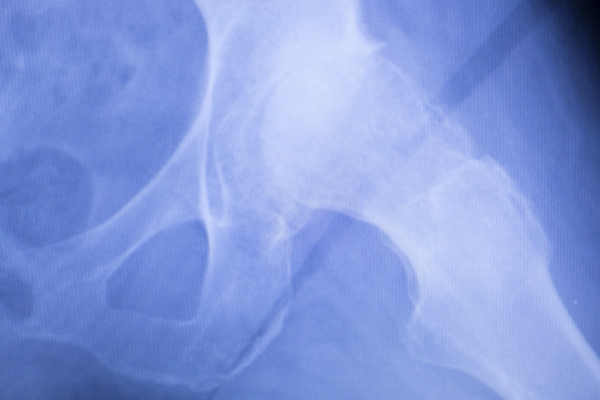Hip Preservation
Hip preservation surgery is designed to treat hip problems in younger and more active patients, with the goal of protecting the natural joint and delaying or avoiding the need for a hip replacement.
Conditions such as hip impingement (FAI), labral tears, and hip dysplasia can cause pain and limit activity. Early diagnosis and treatment with hip preservation techniques can improve function, reduce pain, and protect long-term hip health.

What is Hip Preservation Surgery?
Hip preservation refers to a group of surgical techniques that correct structural problems in the hip joint while maintaining as much of the patient’s natural bone and cartilage as possible.
Unlike hip replacement, which removes and replaces the joint surfaces, hip preservation aims to restore normal function and biomechanics of the hip.
Conditions Treated with Hip Preservation Surgery
Hip preservation is often recommended for:
- Hip impingement (FAI) – where bone shapes cause abnormal contact between the ball and socket
- Labral tears – damage to the ring of cartilage around the hip socket
- Hip dysplasia – shallow hip socket causing instability
- Cartilage damage in younger patients
- Early arthritis where joint preservation is still possible
Benefits of Hip Preservation Surgery
- Preserves the patient’s own joint
- Reduces pain and improves function
- Corrects underlying structural abnormalities
- Delays or avoids the need for hip replacement
- Allows younger patients to remain active in sport and daily life
Types of Hip Preservation Procedures
Hip Arthroscopy
- Keyhole surgery used to treat hip impingement and labral tears
- Removes excess bone, repairs labral cartilage, and smooths joint surfaces
Periacetabular Osteotomy (PAO)
- Used to correct hip dysplasia by repositioning the socket for better coverage of the femoral head
Cartilage Restoration Techniques
- Microfracture or grafting methods to stimulate cartilage healing in younger patients
The Hip Preservation Procedure
Before
- Detailed imaging with X-rays, MRI, or CT scans
- Pre-operative physiotherapy may be advised
- Full discussion of surgical options and recovery expectations
During
- Carried out under general anaesthetic
- Minimally invasive arthroscopy for most cases
- Osteotomy may be required for hip dysplasia cases
After
- Same-day discharge for many arthroscopic procedures
- Crutches for 1–2 weeks (longer for osteotomy)
- Early start to physiotherapy programme
Recovery After Hip Preservation Surgery
Short-Term Recovery
- Walking aids needed initially
- Pain and swelling controlled with rest, ice, and medication
Rehabilitation Timeline
- 0–6 weeks: Protect the joint and restore motion
- 6–12 weeks: Begin strength and stability exercises
- 3–6 months: Return to low-impact activity
- 6–12 months: Full recovery, with return to sport in most cases

Risks and Complications
As with all surgery, hip preservation procedures carry risks, including:
- Infection
- Nerve irritation
- Hip stiffness
- Failure to relieve pain if arthritis is advanced
- Need for further surgery if the joint deteriorates
Why Choose Mr Mark Webb for Hip Preservation
When you choose Mr Mark Webb for hip preservation, you benefit from:
-
An accurate diagnosis using advanced imaging (MRI, CT), joint biomechanics assessment, and detailed evaluation of cartilage, labrum, and bone shape
-
Early intervention to preserve your own hip joint rather than replacing it—aiming to correct structural issues before they cause irreversible damage
-
Minimally invasive arthroscopic or joint-sparing surgical techniques where possible, to correct hip impingement, repair labral tears, treat dysplasia, or other structural problems
-
A personalised treatment plan tailored to your age, lifestyle, cartilage health, and goals (whether daily activities or return to sport)
-
A structured rehabilitation program designed to restore hip strength, stability, range of motion and minimise the risk of early arthritis
Frequently Asked Questions
What is hip preservation, and how is it different from hip replacement?
Hip preservation refers to treatments that aim to repair, correct, or prevent damage to the hip joint so you can keep your natural joint longer. It often involves procedures like arthroscopy, osteotomy, labral repair, or correcting deformities (e.g. hip impingement or dysplasia). Hip replacement replaces damaged parts of the joint with artificial components and is generally considered when damage is too advanced.
Who is a candidate for hip preservation surgery?
You may be a candidate if:
-
You have hip pain or dysfunction, but not yet severe arthritis or extensive cartilage loss
-
Imaging shows structural problems (e.g. impingement, dysplasia, labral tear) that can be corrected
-
You are relatively young or active and wish to retain your natural joint for as long as possible
-
Non-surgical treatments (physio, activity modification, injections) have been tried but haven’t brought sufficient relief
What kinds of surgical and non-surgical treatments are used in hip preservation?
Non-surgical options include: physical therapy, activity modifications, anti-inflammatory medications, and injections (for example corticosteroids or biologics). Surgically, hip preservation can involve arthroscopic labral repair or debridement, correcting bone shape (cam/pincer impingement), osteotomy (reshaping bone), sometimes cartilage repair, or other joint-sparing procedures.
What are the benefits of hip preservation surgery, and what outcomes can I expect?
Benefits often include: reduced pain, improved hip function and mobility, delay of arthritis or hip replacement, better return to activity and sport, and preserving bone and cartilage. Recovery times vary but many patients see substantial improvement in daily activities.
What is the typical recovery timeline after hip preservation surgery, and when can I return to normal or sports activities?
Recovery depends on the type of procedure and the extent of correction. For example, after hip arthroscopy for impingement or labral repair, patients may be on crutches for 3-4 weeks, begin physical therapy early, and often be back to sport in 4-6 months. More involved procedures (like osteotomy) may require longer phases of protected weight bearing and slower progression.

